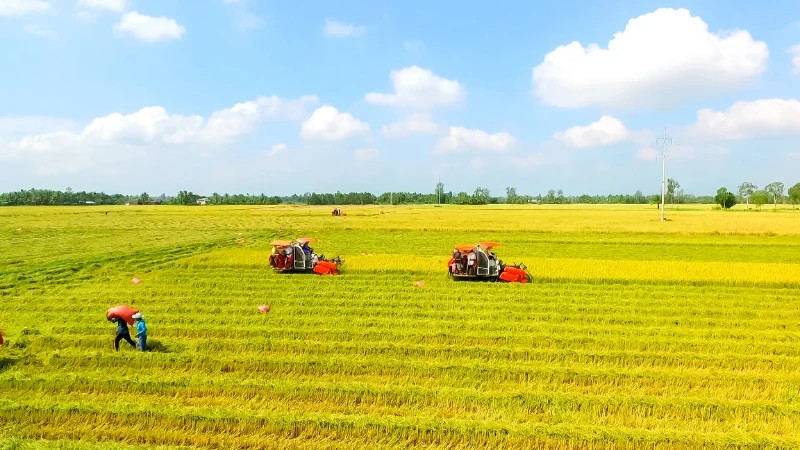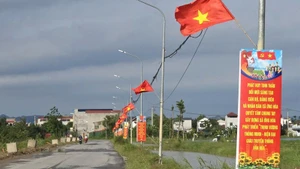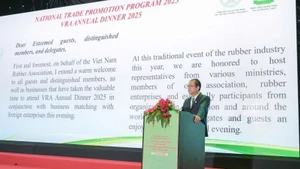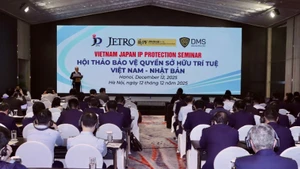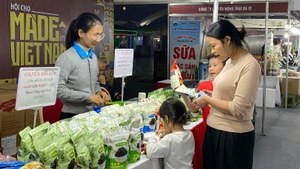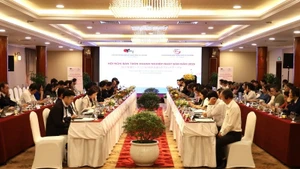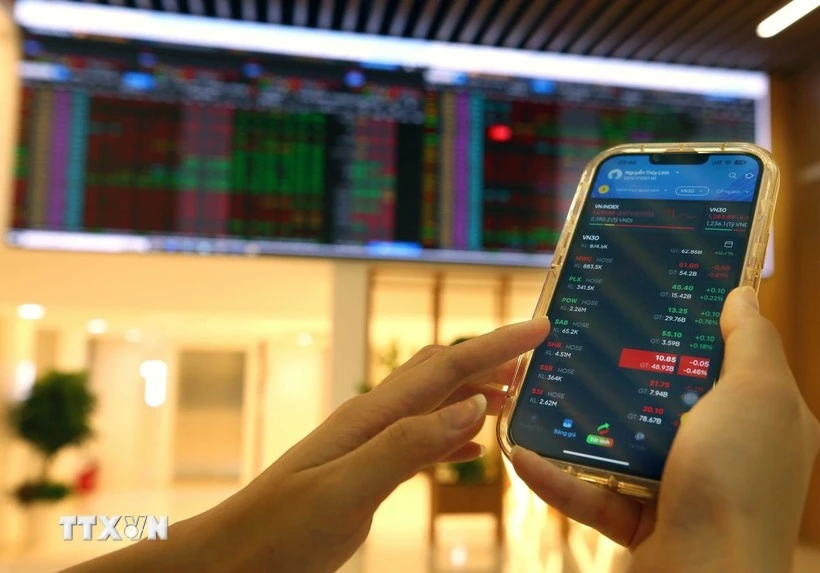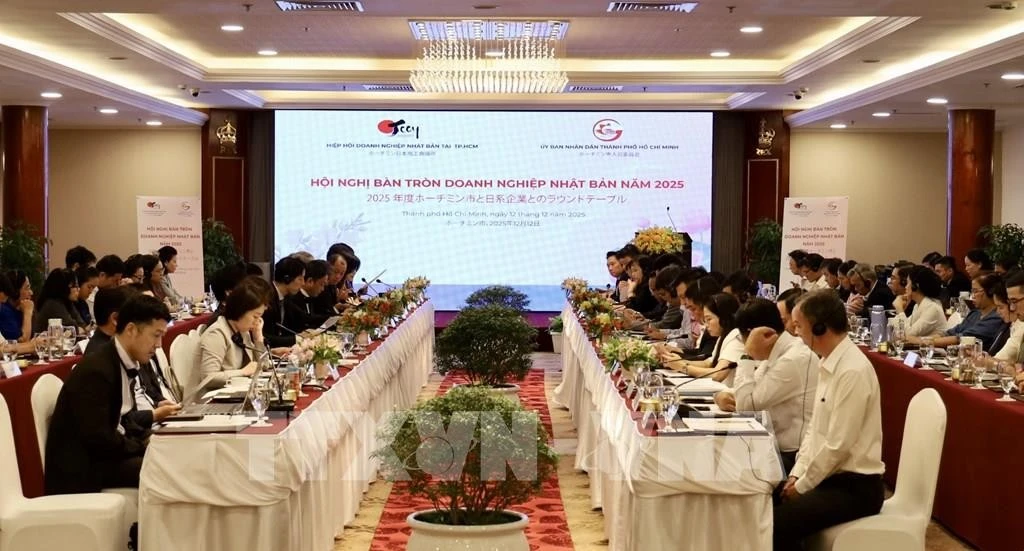To restore growth momentum, aiming for the annual export turnover to exceed the 5.75 billion USD mark in 2024, there needs to be early changes in production and export market orientation.
In the first three months of 2025, Vietnam’s average rice export price is estimated at 522.1 USD/tonne, down 20.1% compared to the same period in 2024.
In the first quarter, the Philippines was Vietnam’s largest rice consuming market with a market share of 42.1%. Ivory Coast and Ghana were the next two largest markets with market shares of 16.3% and 10.2%, respectively.
Potential price reduction risk
According to the Vietnam Food Association (VFA), the current price of 5% broken rice in Vietnam has increased compared to the beginning of 2025 but is still below 400 USD/tonne - equal to the same type of rice in Thailand and 4 USD/tonne and 8 USD/tonne higher than India and Pakistan, respectively.
The VFA representative said that the increase in Vietnam’s rice export price in the coming time is still not really positive due to being influenced by market demand and supply.
According to the latest rice price update report of the Food and Agriculture Organisation of the United Nations (FAO), the global rice price index (FARPI) decreased by 6.8% in February 2025 to 105.9 points, marking the lowest level since April 2022 and down 24.7% compared to the same period last year.
In particular, Indica rice prices fell the most, down 7.7% from January to their lowest level in more than two years. Fragrant rice prices fell 5.4%; Japonica rice fell 3.1%, mainly due to weak purchasing power.
In Asia, export prices fell in India, Thailand and Vietnam. The reason was that many rice importing countries reduced their purchases, leading to a general decline. Specifically, the two leading rice importing countries, the Philippines and Indonesia, both reduced their purchases in the first quarter.
In Indonesia alone, favourable prospects for the main rice crop in 2025 brought the forecast of the country’s rice imports in 2025 to only 1.9 million tonnes compared to 3.7 million tons imported in 2024.
FAO also forecasts global rice production in 2024/2025 to reach an all-time high of 543 million tonnes, up from the previous forecast of 539.4 million tonnes; global rice stocks in 2024/2025 to reach a record 206 million tonnes, up from the previous forecast of 204 million tonnes.
In Vietnam, after a period of maintaining high prices, Vietnamese rice prices have been fluctuating steadily downward since October 2024 due to India lifting the ban on exporting regular white rice (non-basmati).
Meanwhile, according to the Department of Crop Production and Plant Protection, as of March 10, 2025, provinces and cities in the Mekong Delta have planted more than 1.5 million hectares of winter-spring rice, harvested about 650,000 hectares with a yield of 67.72 quintals/hectare, and an estimated output of 4.402 million tonnes of rice.
The 2025 summer-autumn crop has begun planting 203,000 hectares out of the planned 1.482 million hectares. Thus, it can be seen that, in addition to the large global rice supply, Vietnam’s rice supply in 2025 is also quite abundant, so it is even more necessary to have a plan to boost domestic consumption and export.
Focusing on producing and exporting high-quality rice
Truong Van Chinh - Director of Chon Chinh Import-Export Company Limited (Dong Thap province) said: In the first three months of 2025, the company’s rice export revenue increased by 15% compared to the same period in 2024. The reason is that the company focuses on exporting high-quality rice to diverse markets in Asia, Africa, Europe, such as: China, Philippines, Singapore, Ghana, Ivory Coast, South Africa...
In particular, the company’s ST25 rice is increasingly exported to European markets such as Italy, Denmark, Sweden... with an output of about 1,000 tonnes in the first quarter of 2025. It is worth mentioning that ST25 rice exported to Europe has a high price, about 1,250 USD/tonne, while the same type of rice exported to China only reaches about 700-800 USD/tonne.
As for fragrant rice like Dai Thom 8, the price is only about 500 USD/tonne. Thanks to promoting the export of high-quality rice to high-priced markets, the company’s rice export revenue still achieved double-digit growth in the context of a sharp decline in the country’s rice export price and revenue.
In addition to ST25 rice, fragrant rice, and specialty rice, the company is also cooperating with a number of cooperatives to grow rice to reduce emissions. If the amount of rice is large enough for export, the price will be even higher,” Chinh emphasised.
Sharing the same view, many rice processing and exporting enterprises believe that in the high-quality rice segment, the price of Vietnamese rice will not be affected by changes in India’s rice export policies. However, for some traditional markets such as in Africa, Vietnamese rice may face competition from cheap Indian rice.
Diversifying export markets and exploiting potential markets such as Japan, the US, the European Union, etc. will be good directions for businesses in the face of frequent fluctuations in the market and rice prices today.
According to Vice President and General Secretary of the Vietnam Rice Industry Association (Vietrisa) Le Thanh Tung, in order to contribute to the formation of high-quality rice products, the Association is focusing on participating in the project on sustainable development of one million hectares of high-quality and low-emission rice cultivation associated with green growth in the Mekong Delta by 2030.
At the same time, in 2025, Vietrisa will develop the certification mark “Green Vietnamese Rice with Low Emissions” as a premise for the national certification mark “Low-carbon Vietnamese Rice”.
This is a new step with the expectation of soon building a low-emission rice brand of Vietnam, thereby increasing added value as well as establishing a solid position for Vietnamese rice in the world market.
